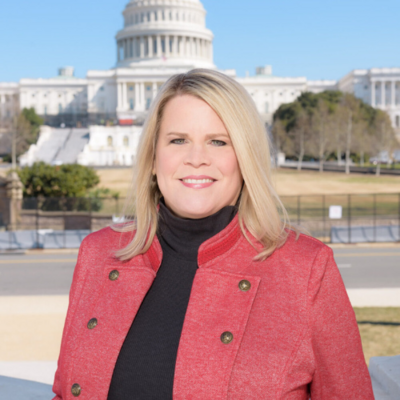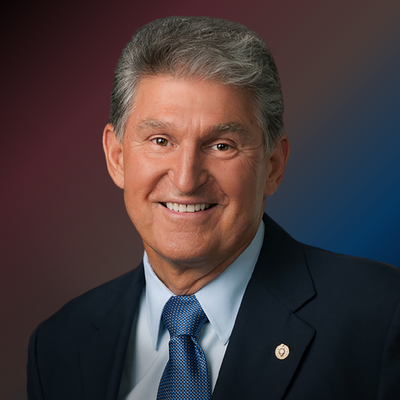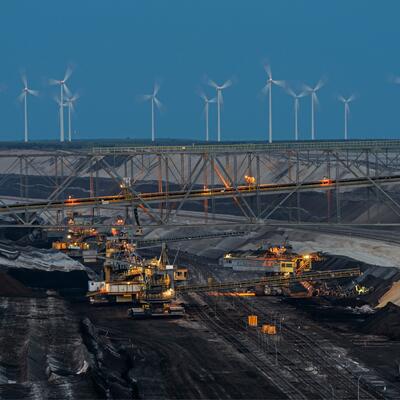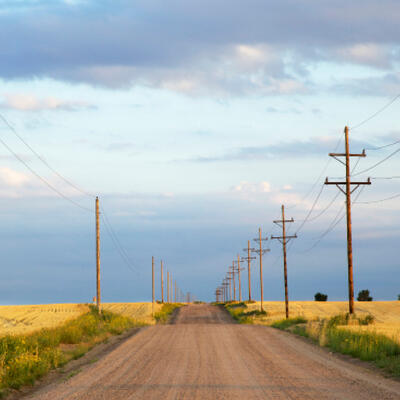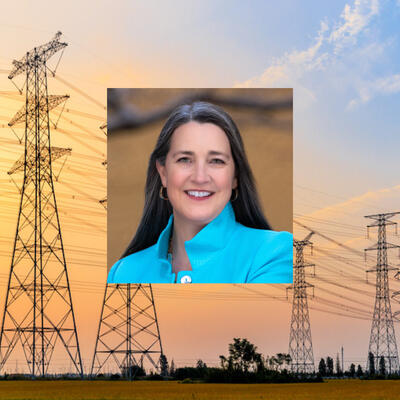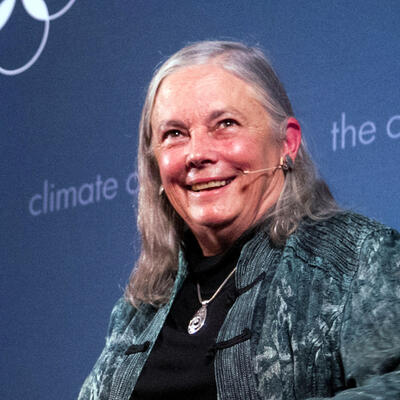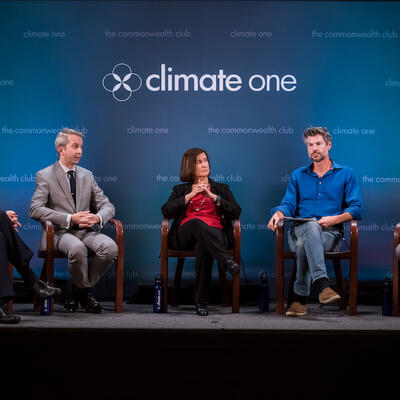
Solar Flare-ups
Guests
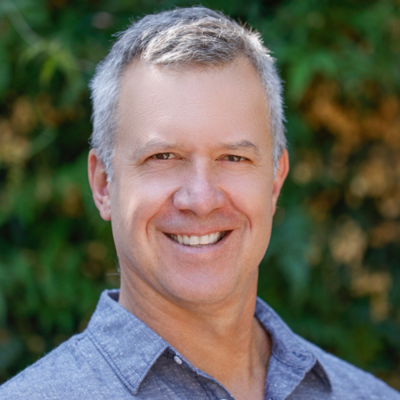
Adam Browning
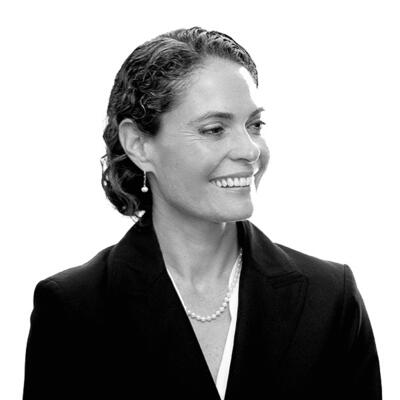
Bernadette Del Chiaro
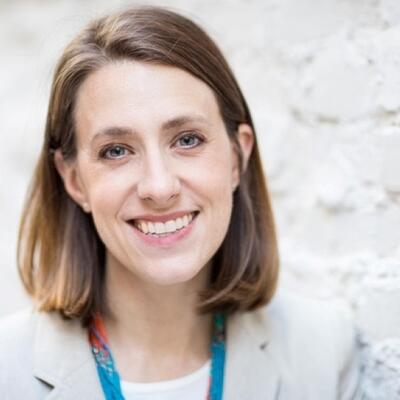
Emily Sanford Fisher

Tom Beach
Summary
Solar power has become one of the cheapest sources of electricity and is viewed as a cornerstone of our clean energy future. But it wasn’t always that way.
When Adam Browning started the renewable advocacy organization Vote Solar in 2002, he says solar was viewed as somewhat of a “hippie pipedream,” considered “way too expensive to really make a dent on our country's energy future.”
During the next 20 years, his group focused on building enough demand for solar to drive down the cost through economies of scale. Today, solar is one of the cheapest sources of electricity. Across the country, many people have opted to install solar panels on their homes, but utilities aren’t always supportive. That’s partly because rooftop solar, as a form of distributed generation, changes the way utilities and electric consumers have typically interacted.
“Solar, unlike other energy sources, allows individuals to take control, to take the future into their own hands,” Browning says. “Solar generates electricity at the point of usage on your own roof. And so, you are then competing against delivered power. So, the retail rates of electricity rather than the wholesale rates of electricity which are much lower.” Browning says distributed generation lowers the grid costs for other customers because it reduces the need to invest in and build new transmission and distribution lines.
But electric utilities don’t entirely agree, according to Emily Fisher, senior vice president of clean energy with the Edison Electric Institute, which represents investor-owned electric companies. She says that’s because today’s electricity rates are based partly on recouping the costs that have already been spent to build out the grid we’re currently using.
“The primary concern that a lot of electric companies have had with net energy metering is that the people who are using the grid, maybe even more intensely because now they're doing that two-way flow of electricity, aren’t helping to pay for the larger cost of the system,” Fisher says.
Earlier this year, the California Public Utilities Commission put forward a proposal to change the rules around net metering rates for rooftop solar customers – cutting the amount they receive back from selling their excess power and charging them a monthly fee. Utilities and labor unions are in favor of these changes, arguing that non-solar customers are in essence subsidizing the cost of connecting solar to the grid. Solar advocates say the proposal would gut the state’s rooftop solar industry and weaken our ability to address climate change.
“We are going to increase our electricity consumption significantly and it's actually really critical from a cost management perspective for all of us that we start to reduce our demand on the grid,” says Bernadette Del Chiaro, executive director of the California Solar and Storage Association. “We just have to get around that sort of old 20th century mindset that the electrons should only flow in one direction and we can really unhinge the innovation of clean energy resources.”California is far from the only state where net metering is a hotly contested issue. A similar fight is taking place in Florida, echoing those that have already happened in states like Nevada, Arizona and Hawaii.
Energy consultant Tom Beach says the push to electrify everything is good news for electric utilities, as there will be more business for both rooftop and utility-scale solar resources in the years ahead, not less.
“The electric utilities are poised to take primary energy use away from the oil companies in terms of replacing gasoline with electric vehicles. They’re poised to take market share away from the natural gas companies because people hopefully will be using heat pumps for space and water heating. It's the best of all worlds for the electric industry and the pie is growing. And the challenge is to produce enough clean electricity to meet that growing demand.”
Related Links:
CPUC net metering proposal
Full Transcript
Ariana Brocious: This is Climate One. I’m Ariana Brocious. Many people have opted to install solar panels on their homes, but utilities aren’t always supportive.
Emily Sanford Fisher: The primary concern that a lot of electric companies have had with net energy metering is that the people who are using the grid, maybe even more intensely because now they're doing that two-way flow of electricity, aren’t helping to pay for the larger cost of the system.
Ariana Brocious: Solar advocates say distributed generation is essential to decarbonize our world.
Bernadette Del Chiaro: We are going to increase our electricity consumption significantly and it's actually really critical from a cost management perspective for all of us that we start to reduce our demand on the grid.
Ariana Brocious: So who holds the power with rooftop solar?
Adam Browning: Solar, unlike other energy sources, allows individuals to take control, to take the future into their own hands. Everything else you had to ask the utilities to do the right thing.
Ariana Brocious: Solar flare-ups. Next on Climate One.
Ariana Brocious: This is Climate One. I’m Ariana Brocious, in for Greg Dalton. Solar power has become one of the cheapest sources of electricity and is viewed as a cornerstone of our clean energy future. But it wasn’t always that way. Adam Browning started the renewable advocacy organization Vote Solar in 2002. I asked him to recall how solar was viewed by utilities and the public twenty years ago.
Adam Browning: Solar I think was seen as this potentially promising energy source that could create electricity without any emissions. But I think there was a healthy dose of, it was kind of a hippie pipedream, it was just way too expensive to really make a dent on our country's energy future. While it sorts of sounded nice it wasn't something to really take seriously.
Ariana Brocious: So, what kind of innovations technologically speaking and maybe financial actually helped solar become mainstream?
Adam Browning: Yeah, so, when I got my start in solar, we actually did this through a ballot initiative that was gonna put solar on city-owned buildings in San Francisco as well as energy efficiency. And then use the money that you would've used to buy electricity to paydown the bond that we are gonna use to finance that investment. And at that point solar was like nine bucks a watt. Really expensive. And there was maybe 160 MW total in the US which is just a rounding error in the overall scheme of things. But looking at solar we did this analysis of like what would it take to take this promising technology and actually make it ubiquitous and cost was the big hurdle. It was pretty clear that the way to get cheap solar was to send a long-term market signal that you were going to buy a lot of solar and that through economies of scale you’re gonna bring down costs. And that was the premise that we launched Vote Solar in order to really transform the energy landscape of the United States and really globally by trying to drive as many solar markets as possible. And it was a beautiful example of where a policy premise really lived up to its promise. There was a global effort from California from Japan from Germany and then from China to really build the scale of market demand that then catalyze a tremendous amount of private capital into building the scale necessary to serve that demand and radically brought down the cost of solar to the point where it is now the cheapest new energy source, bar none. And really the foundation of our hope in the fight against climate change.
Ariana Brocious: So, I think many people who know about rooftop solar or think about rooftops solar, are aware that there’s some federal incentives, tax credits that have helped kind of get that market off the ground. So, when did that begin and when did rooftop solar specifically gain steam?
Adam Browning: You know, through the 80s and 90s there was on-again off-again support for solar often through tax credits. And while tax credits are welcome, I will also say that they’re an imperfect tool to drive it. So, in the United States I would say that actually and this was the insight that really drove the structure of Vote Solar my nonprofit organization was that most meaningful energy policy is made at the state level, not at the federal level. you can view this both as a weakness where it sure would be nice to just pass a law through Congress and have it been done with or you can view it as a strength. And we chose to view it as a strength because at a state level, you're much closer to democracy. You can actually get things done. I have no idea how to actually pass something coherent through Congress right now. Our motto from the beginning was if your plan involves Congress it's a bad plan. I will say that the Solar Energy Industries Association did an awesome job at building federal support principally through tax credits and why tax credits were useful is because you didn't actually have to go through appropriations. So, SEIA was able to get long-term tax credits in a couple of different instances and most recently provided for a of a scale down of the credits of the investment tax credit going forward. But really transformatively, I think it was really state-level policy that built the industry around the country.
Ariana Brocious: Is it true that rooftop solar actually been, drove utility scale solar?
Adam Browning: Oh, it absolutely was incubated. I mean I think you could even make a case for solar to be incubated in the off-grid space first up with certain growers up in Humboldt County. But the largest and most significant piece of policy that really catalyzed the growth of solar in this country was the California solar initiative. So, Gov. Schwarzenegger came up with a million solar roofs goal and then we work through the California Public Utilities Commission and then to the legislature to further validate it. A really large chunk of declining incentives that would drive rooftop solar market policy to the point where it could compete on its own without additional incentives with grid power. And, this was at a time when the idea of just really again building solar as a wholesale energy source was not seen as cost it was not cost competitive. But by incubating on the rooftops again that drove that long-term market signal to invest in factories invest in bespoke silicon manufacturing. And that rooftop solar market is what actually helps build the manufacturing base to the point where it suddenly became competitive or past that threshold to become competitive as a wholesale resource as well.
Ariana Brocious: When a house or a business adds rooftop solar, they switch from being an energy consumer to a supplier and they are essentially competing with their electric utility, even though they depend on them also to be battery and essentially continue to rely on the grid. So, how does that model challenge the traditional model for utilities?
Adam Browning: So, you know, I’d say a long, long ago utility model was really hub and spoke. And, you know, it was a one-way flow of electrons and a one-way flow of money going in the opposite direction. What rooftop solar did is I think really catalyzed a revolution. And I wouldn't even say of challenging but of partnership. Solar, unlike other energy sources, allows individuals to take control to take the future into their own hands. Everything else you had a situation where you had to ask the utilities to do the right thing. Solar was the pointy end of the wedge that allowed individuals to choose their own path going forward. And so, when you had a situation like we did in the early 2000s where you had polling super majorities of people in this country wanting to see a transition to renewable energy bypassing the entities that were not investing in renewable energy, allowing people to take control of their own future was really a promising strategy. Secondly, solar generates electricity at the point of usage on your own roof. And so, you are then competing against delivered power. So, the retail rates of electricity rather than the wholesale rates of electricity which are much lower. You are both providing power to your own house, but you are also lowering overall grid costs for everybody else. You are removing the need to build new generation, you're lowering the need to invest in new transmission lines. You’re lowering the need to invest in upgrades to the distribution system. So, the solar on your neighbor's roof can lower your costs as well.
Ariana Brocious: Yeah. And I think that there are utilities that would push back on the argument that installing solar on your roof lowers your neighbors’ cost because a lot of them have the frame more in this cost-shifting argument that actually you are then not contributing to the cost of the larger grid which everybody else is paying for. In most states the way that rooftop solar is valued for the utility is through something called net metering which is fairly simple and its basics but can get complicated quickly. But could you explain net metering at its most simple?
Adam Browning: So, net metering is a simple transaction under which if you install solar on your roof and you’re generating power. The bulk of that generation, you end up using that's behind your meter. It powers your fridge, it may power your electric vehicle, but it is powering your house. If, at certain times, your solar system on your roof was generating more electricity than you are using, you could feed it back to the grid and you weren't getting paid for it. You are just simply turning your meter backwards. You're getting a credit for that electricity. That electron goes outside of your house and it is then available for the utility to sell to your neighbor at that same price that you got credit for it. It is then a retail kilowatt hour. So, you're simply in essence loaning it to the utility. They sell it to somebody else, your neighbor and you get credit for that generation for it. There's a lot of advantages to it. First, it’s extremely simple to implement. Secondly, it does a fair job of approximating the long-term value of distributed generation, which again can obviate the need for new transmission upgrades to your distribution system and other collective grid costs.
Ariana Brocious: There have been a number of states that have on the local level been challenging rooftop solar and net metering policies. Can you tell us what happened in Nevada?
Adam Browning: In Nevada we had a challenge to the net metering policy in the states through the utility commissions. And they, this was back in 2016 and they ended up killing the net metering program there which absolutely decimated the really fast-growing rooftop solar industry there, put a lot of people out of work. And then also, you know, was a real challenge to the people who had invested in solar and weren’t necessarily seeing the value of their generation. People were quite upset. Solar polls through the roof, if you'll forgive the pun here. And so, through years of advocacy of collaboration of working with the community groups of working with the consumer groups of working with environmental groups, we, and a lot of different allies succeeded in bringing rooftop solar back to Nevada. So, I think the lessons to be learned here is that first, it is not good policy to tell people that they can't have what they want, particularly when there is a strong value with it. I would just, you know, I think a lesson to be learned here is that you should lean in to these climate solutions and figure out a way of making it work for everyone, I think you can point to Hawaii as another place where a similar effort happened. Electricity prices are extremely high in Hawaii as you know they have to import all of their fossil fuels and that just drives up costs. Solar was an incredibly economic no-brainer there. The solar rooftop solar industry took off. There were strong efforts to stop it. Those were successful. And then there were revisions that found a middle path going forward. And right now, Hawaii was the first state in the country to pass a law that requires 100% renewable energy. And given their constraints in terms of their land area available a lot of that is and should come from rooftop solar.
Ariana Brocious: The reason that we’ve seen a lot of this pushback is driven by utilities, right, in most of these states where the utilities are opposing rooftop for their own reasons. What are those reasons?
Adam Browning: Well, I'm sure you have utilities speaking for themselves on your show later here. But I'd posit that you know it is uncomfortable for utilities to not be in control over their grid to not be the ones that are in charge of generating their own power. It's not the way that they were set up. Let’s say in most places as well utilities are compensated in effect for the amount of capital they deploy. They are able to earn a return on their equity based upon again how much money they put out there. So, perversely, the lower the cost of the overall grid, the less money that they're able to deploy and really that reduces their potential for economic gain.
Ariana Brocious: So, we’re seeing fights right now in Florida. California has an ongoing discussion debate around their net metering pricing and policy. I’m curious what you think we can learn from states like Arizona, which has huge solar resources and several years ago made changes to their net metering policy that did impact rooftop solar. It still exists, but I don't think it's probably at the level that you might see where the policy is more favorable for a homeowner. So, are there lessons we can learn from those kinds of states?
Adam Browning: I think I would go back to, this works for both policymakers as well as utilities, an approach that tells consumers they can't have what they want is in the long-term doomed to fail. It is much better to lean in to figure out a way to make it work for everybody. And I think that that will really drive frankly fundamental changes in the utility business model that we need to figure out different and better ways of financially rewarding successful utilities. So, that's a much longer and much more difficult overall reform of regulatory policy but is one that I think that we need to get into in order to actually land this plane. Our overall electricity system is gonna be under enormous strain to make huge changes going forward if we’re gonna be successfully able to deal with climate change, with global warming. We need to get rid of gas in the building system. We also need to electrify transportation. That is going to at least double the amount of electricity that we need in this country going forward. And powering all of that with renewables is eminently possible but it's really going to be helpful if we make as efficient usage as possible with the grid that we have right now. And it’s not gonna be only around rooftop solar. If we think about electric vehicles as we add new EVs to the grid that can either drive tremendous amounts of new generation capacity necessary which will add cost to everybody or we'll figure out ways of actually partnering with EV owners to charge only when the grid has a lot of excess capacity on the grid and that will keep costs down for everybody. The challenge that we have to fully decarbonize our grid is both tremendous as well as doable. And we need to be pressing on the accelerator for all of these things and not the brakes.
Ariana Brocious: Adam Browning is Cofounder and Executive Director emeritus of Vote Solar. Thanks for joining us on Climate One today, Adam.
Adam Browning: Thanks so much for having me, my pleasure.
Ariana Brocious: You’re listening to a Climate One conversation about rooftop solar. If you want to hear more of Climate One’s empowering conversations, subscribe to our podcast wherever you get your pods. Coming up, the role of solar in the shift to decarbonized energy sources:
Tom Beach: The electric utilities are poised to take primary energy use away from the oil companies in terms of replacing gasoline with electric vehicles. They’re poised to take market share away from the natural gas companies because people hopefully will be using heat pumps for space and water heating. It's the best of all worlds for the electric industry and the pie is growing.
Ariana Brocious: That’s up next, when Climate One continues.
Ariana Brocious: This is Climate One. I’m Ariana Brocious, and we’re talking about current debates over rooftop solar and net metering policies. Earlier this year, the California Public Utilities Commission put forward a proposal to change the rules around net metering rates for rooftop solar customers–cutting the amount they receive back from selling their excess power and charging them a monthly fee. Utilities and labor unions are in favor of these changes, arguing that non-solar customers are in essence subsidizing the cost of connecting solar to the grid. Solar advocates say the proposal would gut the state’s rooftop solar industry and weaken our ability to address climate change. But California is far from the only state where net metering is a hotly contested issue. We invited three guests to join Climate One host Greg Dalton to discuss what’s at stake. Bernadette Del Chiaro is executive director of the California Solar and Storage Association. Emily Fisher is general counsel and senior vice president of clean energy for the Edison Electric Institute, which represents investor-owned electric companies. Tom Beach is principal consultant with Crossborder Energy and has done numerous cost-benefit comparisons between rooftop and utility-scale solar.
Tom Beach: Most customers who put solar on their house, about 50% of the electricity is used by the homeowner and that power never touches the grid. About 50% of the solar output will occur at times when the solar is producing more than you need in your house. And at those times, typically in the middle of the day when the sunlight is strong, that's when you will export the excess generation out to the grid. And then as a matter of physics that power basically serves your neighbors. One analogy that I think is useful is if you plant a vegetable garden in your yard and you start growing your own vegetables, you'll consume some of those vegetables yourself and you will buy less vegetables from the local grocery store. Well, the local grocery store doesn't get to charge you for the vegetables that you're no longer buying from them. And that's why the idea of putting large fixed charges on the solar customers in essence, to charge them for the power that they're not using, is problematic.
Greg Dalton: Emily Fisher, your response to that. Why should people be charged for energy that never touches the grid?
Emily Sanford Fisher: So, I think that’s one of the things that makes it hard to talk about net energy metering and rooftop systems is that sometimes we’re not careful with terminology. And one thing is that I don't think that the way that net energy metering is structured means that you're charging customers for the energy that they are consuming. And it might be helpful to take a step back and talk just a little bit about the three different parts that make up an electricity rate. There’s a charge for the actual electricity you're consuming, and then there are charges for the transmission and distribution system. So, if you're consuming the electricity that your home system is generating behind the meter, you're not paying for that electricity. You just get to use it and you’re not being charged anything by the electric company. But what you're not doing is paying for that larger transmission and distribution system that as Tom mentioned you're using at other parts of the day, either to bring power into your home because you don't have enough from your own system or to take that excess and sell it back to the grid. And so, really the question with net energy metering isn’t really about the generation part, it’s about whether or not those customers are contributing to that larger transmission and distribution system on which everyone, including customers with rooftop solar, rely. And so, I think that’s what some of the net energy metering debate right now is about is, are we recovering those costs related to that larger system and what’s a fair way of making sure that everyone who uses the grid pays their fair share for it.
Greg Dalton: Right, I think everybody can conceptually agree with that but it gets down to how much, who pays what for that grid distribution system. Bernadette, your group, and many others are opposed to these changes, your response?
Bernadette Del Chiaro: Yeah, well, I think Emily Fisher and I agree on one thing which is net metering is about the energy that is exported to the grid on a sunny day. That's a good thing. And the debate in California right now is about what should that compensation be, you know, what should people get, what's the price per kilowatt hour that people should get. I think what Tom is raising is this completely out in left-field idea that Southern California Edison and Pacific Gas and Electric and Sempra, the parent company of San Diego Gas and Electric, have proposed that the Public Utilities Commission their first draft of this policy change have embraced but they are hopefully backing away from which is taxing solar users for that self-consumption that energy that never touches the grid. And I think if I could elaborate on Tom's metaphor for a second. Let's now imagine that that homeowner not only is growing carrots but has just become a vegetarian. So, they’re gonna be consuming a lot more vegetables. They probably will be buying just as many vegetables from the grocery store but they’re gonna augment that with their own garden. That's really the future we’re heading to as we electrify and we add electric cars, we add heat pumps to displace our natural gas usage in our homes. We are going to increase our electricity consumption significantly and it's actually really critical from a cost management perspective for all of us in California especially that we start to reduce our demand on the grid. We're in an electricity crisis right now in California. The governor declared it not long ago. We need more energy in order to power our society in a clean way.
Greg Dalton: Right. Electrify everything is one of the most compelling cases for addressing climate change. Emily, right now, soaring gas prices make EVs much more price competitive. Electric prices vary around the country, but a rule of thumb is driving EV costs about the equivalent of a dollar gasoline. What opportunity does that present for electrification of homes and mobility and how is that connected to the electrons we've been talking about from rooftop and utility solar?
Emily Sanford Fisher: Well, I think Bernadette and I agree on more than one thing. And one is the value of electrification and helping to address climate change. By and large, electric companies in the United States have already reduced their emissions about 40% below 2005 levels and that’s kind of the standard here we use to measure emissions reductions for a lot of reasons. And that’s a really significant reduction in emissions and we’re on a trajectory to do even more, even faster, and we're going to need a mix of bigger scale renewable generation and smaller distributed resources to ensure that we have the electric energy we need to do homes and cars and all of the things that Bernadette mentioned. So, there's a tremendous opportunity here. I think one of our challenges is to figure out the right mix of distributed and large-scale resources but we’re at a point now where we need both. So, we need to make sure that we're incentivizing and valuing the amount of electricity and emissions reductions we get from both kinds of resources. And it gets to a point that Bernadette was making. As we move toward a more electrified future, we need to make sure that we’re doing it as cost-effectively as possible, and in many instances, larger scale deployments are much more cost-effective than rooftop deployments. And so, sometimes it might make sense to overcompensate rooftop solar but sometimes it might make sense from a customer perspective to look at how much less expensive some utility scale solar and wind deployments can be because they can be significantly less expensive. And so, it’s that mix we’re trying to bridge. We’re trying to find the right mix of resources and there's room for all.
Greg Dalton: Tom, yeah, the criticism Tom is that rooftop solar is expensive compared to utility scale. Your response to that?
Tom Beach: First of all it's very important to recognize that rooftop solar and utility scale power plants are not located in the same place. Rooftop solar is right on your house and right where the power is needed. Whereas utility scale solar is usually located in a remote location where there's inexpensive land and a good solar resource. And that power has to be moved over the transmission system to the load centers. And there are a lot of issues around transmission. It's costly, it's increasingly implicated in wildfires. People generally don't like to have transmission lines in their backyard. So, you know, the idea that we can meet our clean energy goals only with utility scale facilities I think is you know is not correct. I do agree with Emily that there needs to be a mix and these net metering debates are in large part about how to set that balance. I think what concerns a lot of folks in the solar industry is that the proposals that have been made in California wouldn't just readjust the balance between small-scale and large-scale, it would devastate the rooftop solar industry because the paybacks for investing in solar would become too long for people to reasonably invest in putting solar on their roofs. And that would be a problem at a time where we need both. We need both utility scale and distributed solar in order to meet our climate goals.
Greg Dalton: And Tom in Colorado your report for Xcel Energy showed rooftop solar benefits outweighed cost by some $13 million a year. Is that right? And what impact did that report have on their pricing structures?
Tom Beach: Well, that was a few years ago as I recall they pretty much stayed the course on rooftop solar. One thing that a lot of states have done and I believe was done in Colorado with Xcel is if there is a concern about rooftop solar being unfair to the customers who don't have solar it is to reform your rate structure and make the rates that customers pay more closely aligned with the utilities’ costs. And so, for example I think people generally know that the cost of electricity varies over the course of the day in California when the demand peaks in the evening from 4 PM to 9 PM electricity gets very expensive. And so, Californians are moving to a system of time of use pricing where power will be more expensive from 4 PM to 9 PM, less expensive in the middle of the day, which is when solar tends to produce. And so, that is going to reduce the cost of rooftop solar for all ratepayers by pricing it lower in the middle of the day. That also aligns more closely with the utilities cost structure and a lot of states have looked at time of use rates as a reform for net metering that will help address some of the issues that have arisen.
Greg Dalton: Right. Some states have done away with net metering entirely, though some have reinstated it after significant pushback. Bernadette, your view on that?
Bernadette Del Chiaro: Yeah, I just wanted to mention there’s many studies that actually show really robust growth and distributed energy resources where you pair the solar panels with batteries actually reduce costs for all ratepayers. Chris Clack is a well-known researcher that has shown through extensive modeling that if we were in California to continue to grow our distributed energy and economy here we would actually save ratepayers over hundred billion dollars over the next 15 years by reducing those costs on transmission and distribution and actually enabling more utility scale renewable energy to come onto the grid. So, this is a win-win for everybody as we electrify and decarbonize. It's a partnership that we could be in with our utilities and our customers and putting consumers in the driver seat of our clean energy future. We just have to get around that sort of old 20th century mindset that the electrons should only flow in one direction and we can really unhinge the innovation of clean energy resources.
Greg Dalton: Right. And this is not happening around the country. Duke Energy has recently developed a new rate structure for rooftop solar in North Carolina. They serve power throughout the southeast. Emily, your thoughts on how there might be a way to kind of have you know the sweet spot here that works for utilities and that also encourages rather than kills rooftop solar.
Emily Sanford Fisher: Well, I think Tom mentioned some really important concepts that kind of get at the fact that net energy metering as it was sort of initially proposed and has been deployed kind of over the last 10 to 15 years is a pretty blunt instrument, right. It has one price that a customer is paid for whatever it is they're selling back to the grid and it wraps in all of the system costs and it doesn’t help them pay for the system that they're using to participate in the two-way flow of electrons that Bernadette is interested in facilitating. But one of the things that Tom mentioned that I think is really important is this idea of incorporating time of use pricing so that the customer who is producing electricity at a time of day when is it really valuable to the grid because demand is high it’s compensated at a higher rate than someone who is adding to the system when they already have an over generation more on solar than the system can currently use until the batteries that Bernadette is talking about are more widely available and more generally economic and that is that Duke proposal in South Carolina that’s moving forward. Where they have incorporated elements of time of use pricing to incentivize people to put solar where it could be most impactful and then to recognize the fact that the value of electricity is different during different times of the day. And so, that I think the future is when we all work together to come up with tools for compensation that are more nuanced and recognize that there isn't just one value to electricity throughout the day that reducing peak is really important. And so, it strikes me is that’s a place where you’ve seen some progress where the different stakeholders come together and try to find new solutions.
Greg Dalton: Bernadette, you think there is some actually kind of surprising alliance around that Duke proposal in North Carolina.
Bernadette Del Chiaro: Well, I think North Carolina and California have very little in common. So, I think it’s very dangerous to invoke that example to try to import it into the California conversation. But I think it is important to note that net metering is actually fairly simple. That's why it's been so successful is because it is a simple billing mechanism that gives the consumer the assurance that when they make a pretty sizable investment in their solar system, they’re gonna recoup that investment and save money. Time of use rates which is an underlying structure, right, the rate structure belies net metering, which is just the two-way meter and compensation for exports. That is something that I don’t think there’s any daylight between the utilities and the industry. We in fact embraced time of use rates that is required of all California solar customers and you will see actually CALSSA has proposed some of the most aggressive real-time pricing mechanism for the state to move us in that direction of driving energy generation, energy storage, energy usage in alignment with our carbon goals.
Greg Dalton: Tom, I know you were involved in that North Carolina case, and isn’t the rub here that rooftop solar diverts revenue and profits from utilities to homeowners. Isn't this really about fighting over money, Tom?
Tom Beach: Well, you know, I think that that is not really what the focus should be here because I think as we've all been talking about electrification. And electrification means that the pie is growing and I mean this is actually really, I think the best time to be an electric utility since Thomas Edison invented the light bulb. The electric utilities are poised to take primary energy use away from the oil companies in terms of replacing gasoline with electric vehicles. They’re poised to take market share away from the natural gas companies because people hopefully will be using heat pumps for space and water heating. It's the best of all worlds for the electric industry and the pie is growing. And the challenge is to produce enough clean electricity to meet that growing demand. And that growing demand will also help keep rates down in the long run. And so, there's plenty of work and business to go around for the folks who build large utility scale power plants, for distributed rooftop solar, for the utility workers who maintain the T&D infrastructure. The pie is just getting bigger and we shouldn't be fighting over it as though it's a zero-sum game or an industry that is shrinking.
Ariana Brocious: You're listening to a conversation about rooftop solar. This is Climate One. Coming up, the case for more distributed generation:
Bernadette Del Chiaro: We’re in a climate crisis, we need to get off of fossil fuels now. We’re gonna need all of these forms of renewable energy to get there and maintain our modern lifestyle. But we can do it more cheaply, more cost-effectively if we build more distributed generation, not less.
Ariana Brocious: That’s up next, when Climate One continues.
Ariana Brocious: This is Climate One. I’m Ariana Brocious. We’re talking about rooftop and utility-scale solar with Bernadette Del Chiaro with the California Solar and Storage Association, Emily Fisher, representing investor-owned electric utilities, and energy consultant Tom Beach. Let’s get back to their conversation with Climate One host Greg Dalton.
Greg Dalton: Emily, not long ago there was talk of death spirals for electric utilities. And Tom saying these are heydays because electric utilities are taking revenue from oil and gas isn’t this a good time and isn’t there a win-win here to be found?
Emily Sanford Fisher: Well, I definitely think that maybe some discussions of the demise of the traditional sort of distribution electric company, I don’t know, Mark Twain like or maybe overstated. And I don't think this is about loss of utility revenues or profits in many parts of the United States, including in California. The actual generation costs are generally a pass-through meaning that the utility doesn't tend to earn on them and they’re not incentivized to build new generation. So, this isn't about like who gets to build the generation in large measure. I think the primary concern that a lot of electric companies have had with net energy metering is that concern that the people who are using the grid, maybe even more intensely because now they're doing that two-way flow of electricity that Bernadette was talking about aren’t helping to pay for the larger cost of the system. And that cost is generally fixed, it's determined by the Public Utility Commission and then it is paid by all customers. And when net energy metering customers are being paid for the electricity that they are selling back to the grid at the full rate that includes those T&D cost transmission and distribution costs they’re not contributing as much as other customers. And because it’s fixed it gets shifted to other customers. So, I think our concern has generally been less about lost generation profits and more about making sure that the system costs are recovered. As we all become more reliant on it, as we now we’re gonna electrify more things, including our cars. And just trying to make sure there's some equity in there for all customers including customers who aren’t capable of making that big upfront investment that we were talking about that’s necessary in order to put rooftop solar on your house.
Greg Dalton: Bernadette?
Bernadette Del Chiaro: Yeah, well, I think we’re actually hitting the nail on the head here. Utilities in California make a profit off of building poles and wires. They build the infrastructure and they get a guaranteed rate of return on that building of infrastructure. So, if you put all of the power plants at a great distance from our cities where we live and work, you build more power lines, you build more infrastructure and the utilities profit more. When you build the electricity generation resources and the storage resources at our homes, at our churches, in our cities, you actually cut at the utility direct form of profit here in California.
Greg Dalton: Let me jump in there though for a second because it’s those poles and wires and long-distance distribution they caused PG&E to go bankrupt because they’re causing fires. So, those poles and wires may have been a source of profit. Now they're also a big source of risk.
Bernadette Del Chiaro: And ratepayers are paying through the nose to recover that liability. And risk is one of the largest sources of our bill increases actually rate increases has been liability for the poor management of PG&E's poles and wires. So, they get to profit off of billing them, they get to have ratepayers help cover liability and now they're going to profit off of burying them and doing other things to make them safer. We don't disagree that we’re going need the grid, we're gonna need more utility scale power plants everything that Tom and Emily have said about we’re in a climate crisis, we need to get off of fossil fuels now. We’re gonna need all of these forms of renewable energy to get there and maintain our modern lifestyle, but we can do it more cheaply, more cost-effectively if we build more distributed generation, not less. And therein is the divide between us and the investor-owned utilities as they exist today. That's not to say that there isn’t a future for them but it is to say that there is tension right now and it does come down to profit.
Greg Dalton: Tom, you wanna jump in here?
Tom Beach: Yeah, I just like to highlight kind of what I think is a framework disagreement between Emily and myself. She said that a significant part of the cost of the grid are fixed. When I look at this, I'm looking at the long term. Because a solar system will last for 25 years and that's a long-term period. Over a 25-year period there are very few costs of the grid that are truly fixed. The grid is continually being upgraded and expanded and extended. So, I really don't see those as fixed cost to the extent we end up producing more power on our homes and in our local communities. That's gonna mean that the utilities won't have to build as many transmission lines or upgrade as many substations in the future.
Emily Sanford Fisher: So, I think this is where Tom and I like he’s talking about fixed cost in the future. I'm talking about the cost that we have already expended to provide an essential service. And the electric companies have an obligation to serve. And one of the things that is really unique about electricity rates is that unlike other businesses who expend money to make or buy or build something and then get to recover those costs and the prices that they set themselves. These prices are set by electric regulators by Public Utility Commissions. And one of the kinds of unusual things they do is they think about intergenerational equity. And so, because it is fairly expensive to invest in the grid on a long-term basis. We don't recover the cost of building a pole today in electricity rates that are charged today. Those prices are spread out over long periods of time. So, yes, the grid is gonna change in the future and those will be new costs that we have to figure out how to share. But I’m talking about the cost that have already been invested by the electric companies to provide that essential obligation to serve.
Greg Dalton: Inside Climate News recently reported that the nation's largest electric grid operator PJM Interconnection is so overwhelmed by energy developers seeking grid connections that it’s proposing a two-year pause on reviewing more than 1200 projects, most of them solar power. Emily, what is that say about how well the grid can handle a big ramp up, and more utility scale solar and doesn’t that mean that there's a place there for distributed rooftop generation of electricity?
Emily Sanford Fisher: The problem with the interconnection queue about PJM is more not about the grid; it's pretty easy to build out the grid to support interconnections. There are really serious debates in PJM about who pays for what. So, kind of similar to the conversation we’re having now. And it's pretty hard to build transmission in the United States, just in general, siting and permitting is done on a state-by-state basis. And as I think Tom mentioned earlier, not everyone's a huge fan of having big infrastructure. But a lot of studies that look at our efforts to get to a net zero economy by 2050 talk about the incredible importance of the grid. A bigger grid, a more robust grid allows us to interconnect, not just more distributed resources, but more larger scale clean energy that we are going to need to hit net zero. And studies like Princeton’s Net Zero America study from last year shows like a buildout out of 2 to 3 times of the grid is gonna be necessary to achieve our longer-term goals. But there’s room for everybody and we definitely need more distributed resources and I think states that are part of PJM are also looking to incentivize and have other incentives to look at distributed resources in those markets too.
Greg Dalton: We haven’t talked about community solar arrays. How do they fit into this discussion? We’ve been talking about kind of big industrial rooftop there’s something sort of in the middle, Bernadette, community models where people don't put rooftop solar on their roof but it's nearby.
Bernadette Del Chiaro: Yeah, I think community solar fits in the yes and category. We need to maximize all available roof space and every roof in our view that has access and exposure to the sun needs to have solar on it in order for us to reach our clean energy goals. And community solar is a really creative way to expand upon the use of distributed generation.
Greg Dalton: Another important concept is battery storage. Tom, how does battery storage or solar plus storage challenge the traditional utility business model and how is the advent of a more residential solar gonna change what we’re talking about here?
Tom Beach: Yes, storage is a real game changer because the rap on solar is always that the sun doesn't shine at night and there are cloudy days, and it can be variable, and you may not get your solar energy at the time when the grid needs it. And storage completely changes that equation because you can store that excess solar that you have in the middle of the day in your battery and then discharge the battery when demand peaks. And you have a much more valuable resource when you combine solar plus storage. And that combination is happening not just on the scale of distributed rooftop solar, but most of the utility scale solar farms in California also are moving to include storage in their facilities because it just makes the resource so much more valuable. With respect to distributed solar plus storage, in the US I think in the last five years the average number of hours of interruptions of the electric grid has more than doubled from about three and a half hours a year in 2015 to over eight hours a year in 2020. And customers want to be able to have a backup source of electricity when we have hurricanes or tornadoes or wildfires. All of those climate disruptions were more extreme climate events, and that's what solar plus storage can provide.
Greg Dalton: Emily, talking about the future General Motors has an agreement now with Pacific Gas & Electric to basically use electric cars as stores of electricity that can be sent back to the grid. Is our grid ready for that to have our cars and a little mini power plants in the garage or driveway and is that something that the utilities support?
Emily Sanford Fisher: They’re more like mini storage units in the driveway. And I think it’s gonna be a progression. So, I think right now what PG&E and GM and Ford are talking about is not necessarily vehicle to grid but vehicle to home. So, maybe instead of making an investment in a battery for your home, you can make an investment in the car and have it serve those two purposes. Tom pointed out increasing outages; it has been a couple of the worst years ever for hurricanes and wildfires. And as we work to make the grid more resilient, distributed resources can play a role in helping there. And I think it's a kind of an all hands-on deck situation, but I mean we are seeing the impacts of climate change and they are pretty extreme. I think electric companies are excited about their opportunities to partner with some of the car manufacturers to look at how we can work together. I think we’re trying to take some of the lessons learned from the conversations with the rooftop solar folks and integrate them into these conversations and hopefully bypass some of the debates and move right toward progress.
Greg Dalton: Bernadette, there's an equity aspect to this here that I want to make sure we touch on before we close, which is a lot of people can afford solar though the price is coming down and there are, you know, it’s more accessible now than it has been. What's the equity piece of this to make sure that coastal elites are not pushing costs to other lower income communities.
Bernadette Del Chiaro: Well, there is an equity issue. And I think making rooftop solar and batteries more expensive by slapping on a tax and really slashing the value of the energy generated by the solar system is the number one way that California could exacerbate any equity issues that they are perceived in the market right now. So, the number one thing we need to do is keep solar growing keep cost down and avoid penalizing people for going solar if we want to continue to expand access and affordability. But I think there's also a success story of the policies California has put in place today. One in 10 ratepayers have solar today. Okay, so we need to put this in context. It's a big market, we’re very proud of what we've accomplished building over a million rooftop solar systems in the state. But it’s only one in 10. We want to expand that greatly. And within that market of one in 10 we have over 150,000 low income families with their own rooftop solar system. We had over 700 apartment buildings being equipped with solar that flows directly benefits flow directly to the tenants covering over 50,000 families living in low income, affordable housing. And on top of that we’ve got 2000 public schools, over 1500 farms. The market for solar and the access for solar has really, really fastest growing segment of our market today is in low and working-class neighborhoods. So, it’s a huge success story; it has come about because California has had policymakers that are invested in this clean energy resource and invested in making it more accessible to all Californians. And that really has to be our number one focus as we look forward is how do we lower the price increase accessibility and continue to create also the jobs that flow down to the local level and to our local communities.
Greg Dalton: Before we close here, I just wanna ask you to go around quickly and ask what's in your driveway or your garage and what's on your roof. Do you have solar and what do you drive in? Tom.
Tom Beach: Yeah, I actually have to say I got my first solar system in 2003. And I'm actually in the process of replacing it. It operated flawlessly for almost 20 years and I'm replacing it because I now have a plug-in hybrid car. I have an electric heat pump to replace my gas furnace. I just bought an electric range. And so, my electric use is way up compared to when I first put solar on my house. And I'm gonna be doing plenty of business with the Pacific Gas & Electric in addition to using the electrons from my upgraded solar system. So, in the future like I said the pie is growing and there's going to be plenty of business for everybody.
Greg Dalton: Bernadette.
Bernadette Del Chiaro: Well, I’m a mother. Two working parents in the household. So, we have two electric cars in the driveway: a Leaf and a Volt. And we have almost all electric home and a solar and storage system. And I think in my neighborhood very modest neighborhood here in Sacramento I see more electric cars now than solar roofs popping up in driveways. And I think this is the experience of most people that one of the great benefits that I think rooftop solar and electric cars both is that they’re very visible to the community and that helps people see what's possible and follow each other down this road to a clean energy future. And it's something that is an intangible benefit of those solar panels on the roof.
Greg Dalton: Emily.
Emily Sanford Fisher: I have a plug-in hybrid electric vehicle. I do almost exclusively city driving, so I can't remember the last time I drove on my internal combustion engine. And actually, yesterday I had a faster charger installed in my garage much to my husband's joy. He’s pretty excited about having it charge a little faster took advantage of some incentives that my local distribution utility offered to do that. I don't have solar on my house actually I live in a historic home and it’s a flat roof it’s not a great resource. But I live in a state where I can choose my provider and so I opt for a provider that provides clean energy. And so, I am I using my electricity rates to subsidize electricity that’s clean for not just me but also my neighbors.
Greg Dalton: The future is electric, yeah. Kind of like I guess Tom and Bernadette also getting heat pumps and getting rid of the propane and adding batteries, etc. Well, thank you all. Bernadette, Tom and Emily for joining us on Climate One today.
Bernadette Del Chiaro: Thank you.
Tom Beach: Thank you.
Emily Sanford Fisher: Thanks.
Ariana Brocious: On this Climate One... We’ve been talking about debates over rooftop solar in the move to quickly decarbonize our world. Climate One’s empowering conversations connect all aspects of the climate emergency. To hear more, subscribe to our podcast on Apple or wherever you get your pods. Talking about climate can be hard-- but it’s critical to address the climate emergency. Please help us get people talking more about climate by giving us a rating or review. It really does help advance the climate conversation. Brad Marshland is our senior producer; our producers and audio editors are Austin Colón and me, Ariana Brocious. Our audio engineer is Arnav Gupta. Our team also includes Steve Fox and Tyler Reed. Our theme music was composed by George Young (and arranged by Matt Willcox). Gloria Duffy is CEO of The Commonwealth Club of California, the nonprofit and nonpartisan forum where our program originates. Our host and executive producer Greg Dalton will be back next week. Thanks for listening.
